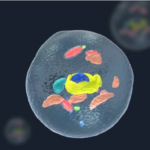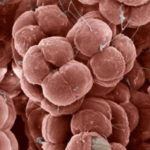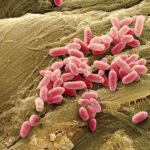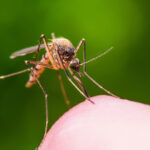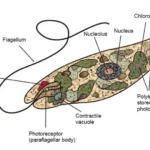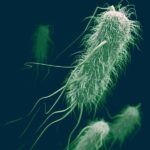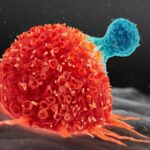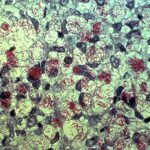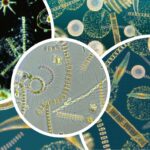What is a microorganisms ?
Microorganisms refer to unseen but microscope-visible, usually single-celled life forms. They encompass various types like bacteria, viruses, fungi, protozoa, and algae. Existing in diverse environments, from underwater to mountains and involved in human bodies to various industrial processes. These microscopic beings play crucial roles in ecosystem functions, such as environmental cycles, food chains, and even global climate changes. For instance, photosynthetic microorganisms produce a significant portion of the Earth’s oxygen. Microorganisms also contribute to the spread of diseases and biological processes like biodegradation.
However, microorganisms are not only integral to natural processes but also hold significance in biotechnology and medical research. They are utilized in antibiotic production, vaccination, genetic engineering, and cancer research, among other fields. Their genetic structure and functionality captivate scientists, promising potential advancements in future medical and technological frontiers.
What are types of microorganisms ?
It is very important to classify microorganisms in order to determine which microorganism is involved in which process. Here are the types of microorganisms:
Bacteria
Bacteria are single-celled microorganisms, mostly lacking a membrane-bound nucleus. They come in various shapes and sizes, typically containing their DNA in a single chromosome within the cytoplasm. Bacteria play a crucial role in ecosystem balance and contribute to biotechnology.
Archaea
Archaea are single-celled microorganisms structurally similar to bacteria but genetically and metabolically distinct. They often thrive in extreme conditions, such as high salinity or acidic environments.
Protists
Protists mainly refer to single-celled eukaryotic microorganisms, including algae and amoebas. They are commonly found in aquatic environments, with some species capable of photosynthesis.
Fungi
Fungi are eukaryotic microorganisms with cellular structures. Yeasts, molds, and mushrooms fall into this category. They derive energy by digesting nutrients and are typically present in terrestrial ecosystems.
Viruses
Viruses are non-cellular microorganisms not considered living entities. They can only replicate inside other cells and consist of genetic material enclosed in a protein coat.
In addition to these categories, if you experience digestive issues, researching probiotic microorganisms and consulting a healthcare professional for usage might be beneficial.
What are the characteristics of microorganisms ?
If you have general information about the types of microorganisms, it is time for the characteristics of microorganisms. Below we have listed the general microorganism characteristics for you:
They Possess a Single-Cell Structure
They Possess a Single-Cell Structure Microorganisms are typically single-celled organisms, performing their functions through a solitary cell. Despite being single-celled, they can exhibit complex structures and organization.
Diverse Metabolic Capabilities
Diverse Metabolic Capabilities Microorganisms employ various pathways for energy production, ranging from photosynthesis to chemical processes. This diversity enables them to thrive seamlessly in different ecosystems.
Variations in Size and Shape Microorganisms vary in size
ranging from dimensions well below a micrometer to a few millimeters. Additionally, they can take on different shapes such as spherical, rod-like, or spiral.
Resilient Characteristics
Microorganisms demonstrate resilience, surviving in unfavorable conditions. Some species thrive in extreme temperatures, acidic, alkaline environments, showcasing their adaptability worldwide.
High Reproduction
Rates Microorganisms tend to reproduce rapidly, with certain bacterial types dividing every 20 minutes under suitable conditions. This rapid reproduction contributes to significant population growth.
Significant Role in Ecosystems
They play crucial roles in ecosystems, contributing to functions like nutrient cycling and energy transfer. For instance, microorganisms play key roles in nitrogen and carbon cycles.
Given these distinctive features, microorganism groups are frequently employed in scientific research and ecosystem studies.
How To Find Microorganisms ?
Searching for a specific microorganism in a laboratory material is a common analysis in various branches of microbiology, employing diverse methods based on the type of material.
Microorganism search analyses, such as in food, environmental, and clinical materials, often focus on investigating the presence of pathogens. In contrast, industrial microbiology aims to obtain high-quality isolates.
In food microbiology, if the law dictates the absence of a target microorganism (e.g., Salmonella) in a specific quantity of food, the analysis is simple—analyzing the sample for the presence or absence of the target microorganism. The goal is for the target microorganism count to be zero. Methods used for analyzing pathogens like Salmonella in food focus solely on confirming the presence or absence of the target microorganism rather than quantifying its count.
Tests for the presence or absence can also be applied to saprophytic or hygiene index microorganisms. For instance, the presence of Alicyclobacillus spp. in apple juice concentrate or yeast in fruit puree is undesirable.
It’s crucial to differentiate between searching for a specific microorganism and searching for an unknown pathogen (or, for example, deterioration in food). This distinction can significantly alter the analysis method.
When searching for a specific microorganism, selective culture media and incubation conditions that only allow the growth of the target microorganism and few accompanying microorganisms are provided. The analysis may start with a general culture medium and progress through selective media stages, concluding with the confirmation of the typical colony on solid media through biochemical and serological methods.
In contrast, when searching for an unknown microorganism suspected from symptoms (or the form of food deterioration), the approach involves inoculating a general culture medium. Industrial microbiology often targets obtaining a specific species, directing the analysis method accordingly.
Not every search for a specific microorganism necessitates the use of selective media. For example, for the analysis of an extreme thermophilic bacterium, a general culture medium at a high incubation temperature may suffice.
For searches involving an unknown microorganism, the analysis starts with inoculation onto a general culture medium. If the potential count and activity of the microorganism are estimated to be high, direct streaking onto a general solid culture medium can be done. Alternatively, depending on the material’s characteristics (e.g., dried material), pre-incubation in a liquid general culture medium can be performed for revival purposes.
Although biological stability tests in food can be considered a form of microorganism search method, the execution and evaluation of the test differ.
Reading the attached files is recommended for more information on the subject.

